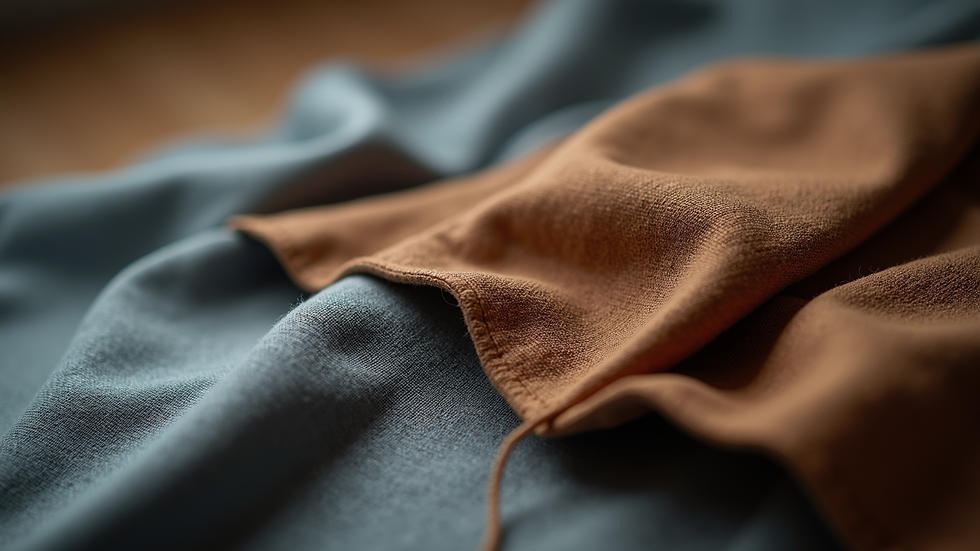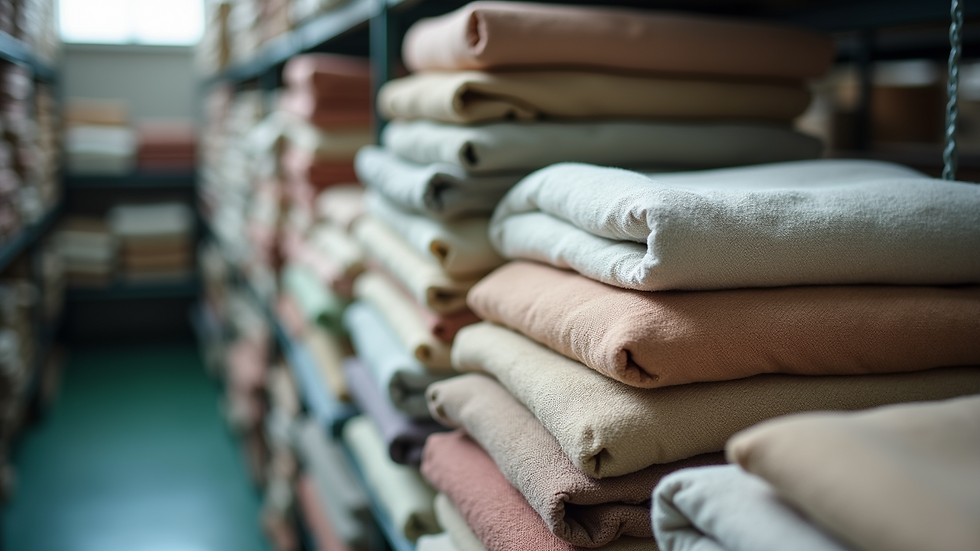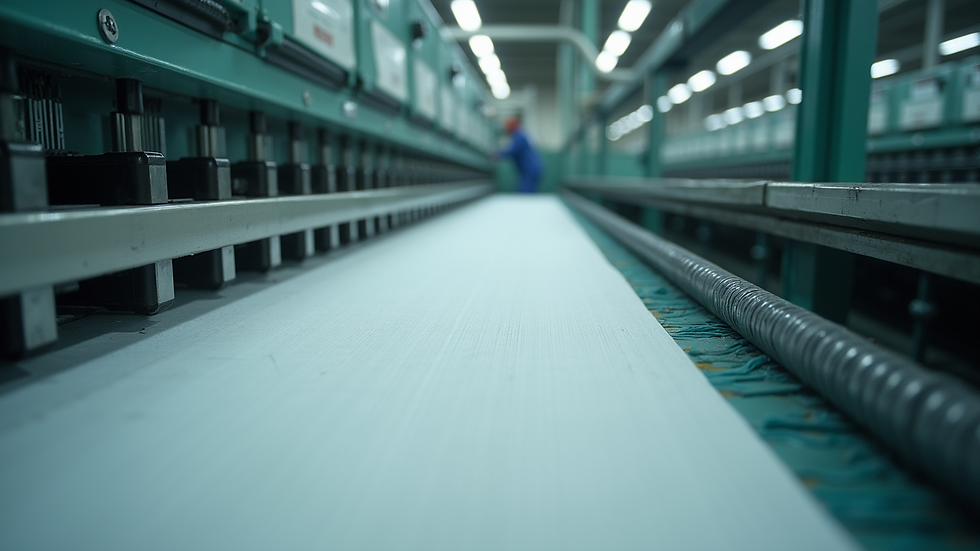Enhancing Textiles Through Advanced Finishing Techniques
- Aug 18
- 4 min read
Advancements in textile technology have transformed the fabric industry. With innovative finishing techniques, manufacturers can enhance textiles, making them more functional and aesthetically appealing. This article explores various textile solutions that are reshaping the landscape.
The Importance of Textile Solutions
In today's market, the competition for fabric manufacturers is fierce. To stand out, companies must deliver textiles that not only meet the demands of modern consumers but also push boundaries. Textile solutions are essential in achieving this goal. For instance, techniques such as digital printing and eco-friendly coatings have revolutionized design and sustainability in fabrics.

Companies are increasingly using these methods to cater to personalized needs, enhancing consumer satisfaction. Studies have shown that up to 80% of consumers value unique textile attributes like durability, comfort, and sustainability. Manufacturers that adopt advanced finishing techniques will not only attract more customers but also ensure higher profits.
Understanding Finishing Techniques
Finishing techniques refer to processes applied to fabrics after they have been woven or knitted. These methods improve the fabric's properties, making it more appealing for consumers. Broadly, the finishing processes can be divided into mechanical and chemical techniques.
Mechanical finishes include processes such as brushing, calendering, and shearing. For example, brushing creates a soft surface for fabrics, adding comfort. Calendering can give a shine or smoothness, enhancing the visual appeal.
On the chemical side, finishes often involve the application of substances, including water repellents or flame retardants. With the rise of sustainability, consumers are more informed about fabric treatments, and manufacturers are moving toward eco-friendly chemical solutions.

These innovations not only elevate the fabric's properties but also extend its life, contributing to sustainability. Overall, understanding and implementing different finishing techniques ensure better end products.
What are the 4 Main Steps in the Production of Finished Fabrics?
To fully appreciate the various finishing techniques used in textiles, it's important to recognize the steps involved in the production of finished fabrics. The four main steps are as follows:
Preparation: This is the initial phase where raw fibers are cleaned and prepared for the weaving or knitting process. It involves processes like scouring, bleaching, and dyeing to make the fabric ready for finishing.
Weaving or Knitting: Here, fiber is turned into fabric. Weaving interlaces threads to create fabrics, while knitting involves yarn being looped together. The choice between weaving and knitting affects the fabric's properties, such as elasticity and strength.
Finishing: At this stage, various techniques, both chemical and mechanical, are applied. This is where the crucial textile solutions come into play, enhancing the fabric's characteristics, from softness to durability.
Inspection and Packing: The final step involves thorough inspection for quality assurance. Once inspected, the finished fabric is rolled and packed for shipment to manufacturers or retail.
Ensuring that each of these steps is executed properly guarantees a high-quality final product.

Innovative Advanced Finishing Techniques
Many advanced finishing techniques have emerged in recent years. Here are some noteworthy examples:
1. Nano Finishing
Nano finishing techniques utilize nanotechnology to improve fabric properties. With microscopic applications, textiles can gain water repellency, stain resistance, and UV protection. This technique is perfect for outdoor gear, clothing, and activewear.
2. Chemical Coating
Chemical coatings have a significant impact on fabric functionality. They can enhance water resistance and add antimicrobial properties, making them suitable for healthcare textiles. The rising demand for hygienic textiles has led to innovations in this area.
3. Digital Printing
Digital printing allows for complex designs and patterns without the usual costs associated with traditional methods. This customization means that brands can offer diverse choices to consumers. The technology also minimizes waste, contributing to eco-friendly practices.
4. Laser Finishing
Laser finishing is revolutionizing textile aesthetics. It allows manufacturers to create intricate patterns and textures with precision. This advanced technique can significantly lower production costs while enhancing the quality of the finished fabric.
Implementing these innovations not only improves product offerings but also helps brands relate to eco-conscious consumers preferring sustainable choices.
The Future of Textile Finishing
As technology continues to advance, the textile industry is poised for more innovations. The future may bring even more sustainable and efficient fabric finishing processes. For instance, researchers are already exploring biofinishing, using enzymes and natural processes to treat fabrics.
Consumer preferences are shifting towards sustainable textiles. Studies indicate that 60% of consumers prefer brands that prioritize environmental responsibility. Manufacturers that adapt to these changes by embracing new technologies and sustainable practices will have a strong advantage.
The importance of transparency in production processes is also growing. Brands that can effectively communicate their sustainable practices—such as eco-friendly fabric finishing processes—will build stronger connections with their consumer base.
Embracing Sustainability in Textile Solutions
Sustainability is not just a trend; it's becoming the norm in the textile industry. Companies must explore ways to minimize their environmental impact. This might include:
Utilizing Eco-Friendly Chemicals: Choosing biodegradable options instead of harmful substances can mitigate environmental damage.
Implementing Recycling Programs: Manufacturers can create closed-loop systems, where fabric waste is processed into new textiles.
Investing in Energy-Efficient Technologies: Opting for energy-efficient machinery and production methods can significantly lower carbon footprints.
By prioritizing sustainability, manufacturers not only contribute to environmental conservation but also appeal to a growing segment of eco-conscious consumers.
In summary, enhancing textiles through advanced finishing techniques is a multi-faceted journey. Understanding the importance of textile solutions and embracing innovation will help manufacturers stay competitive while delivering exceptional products. As the industry evolves, a keen focus on sustainability and technology will pave the way for brighter, more responsible future.





Comments